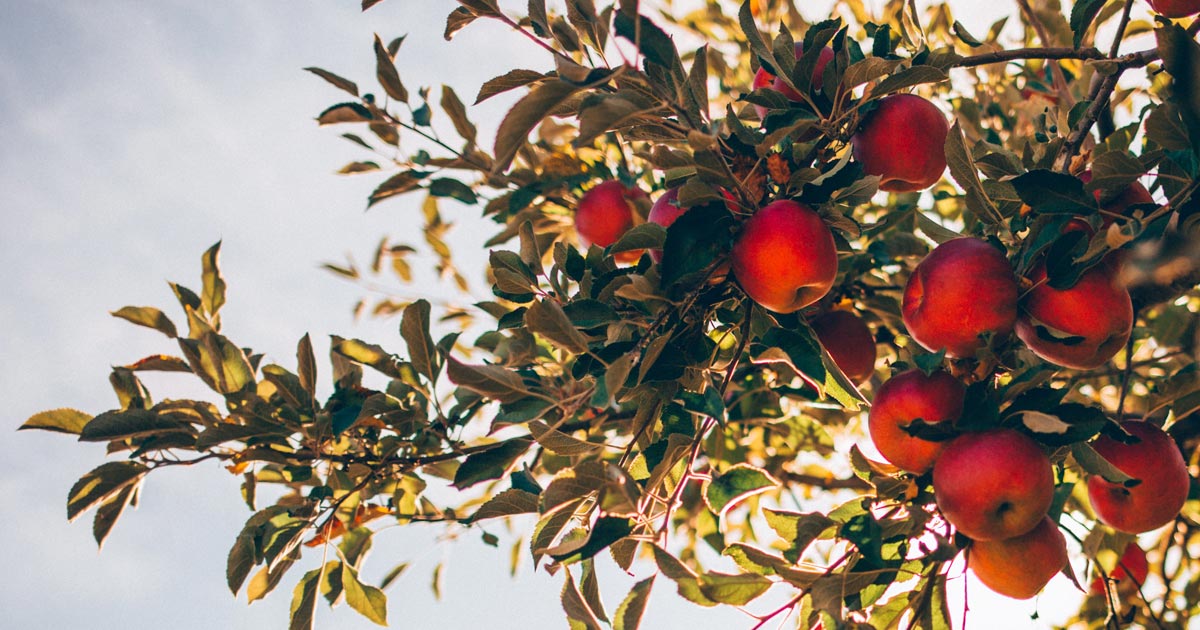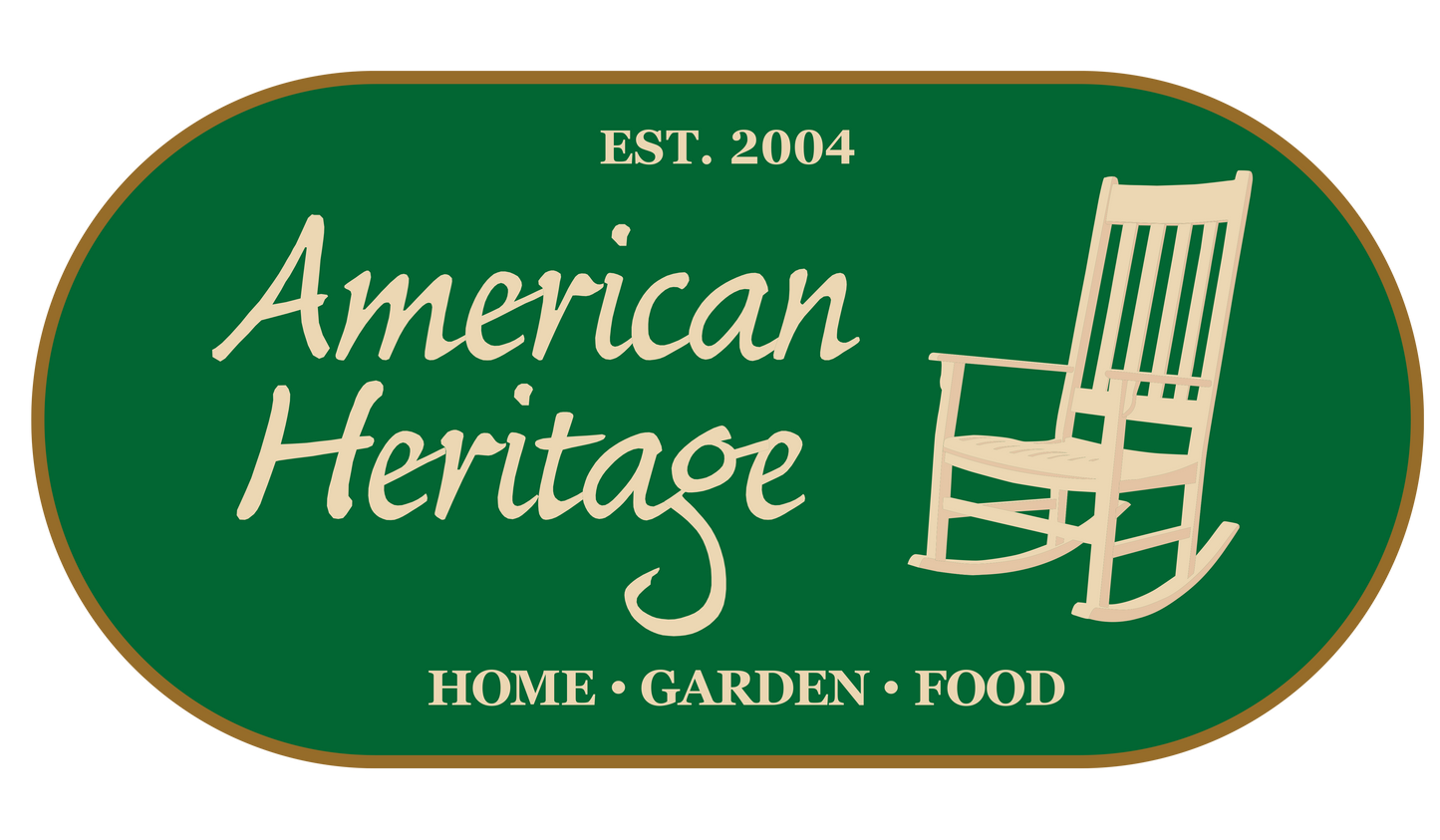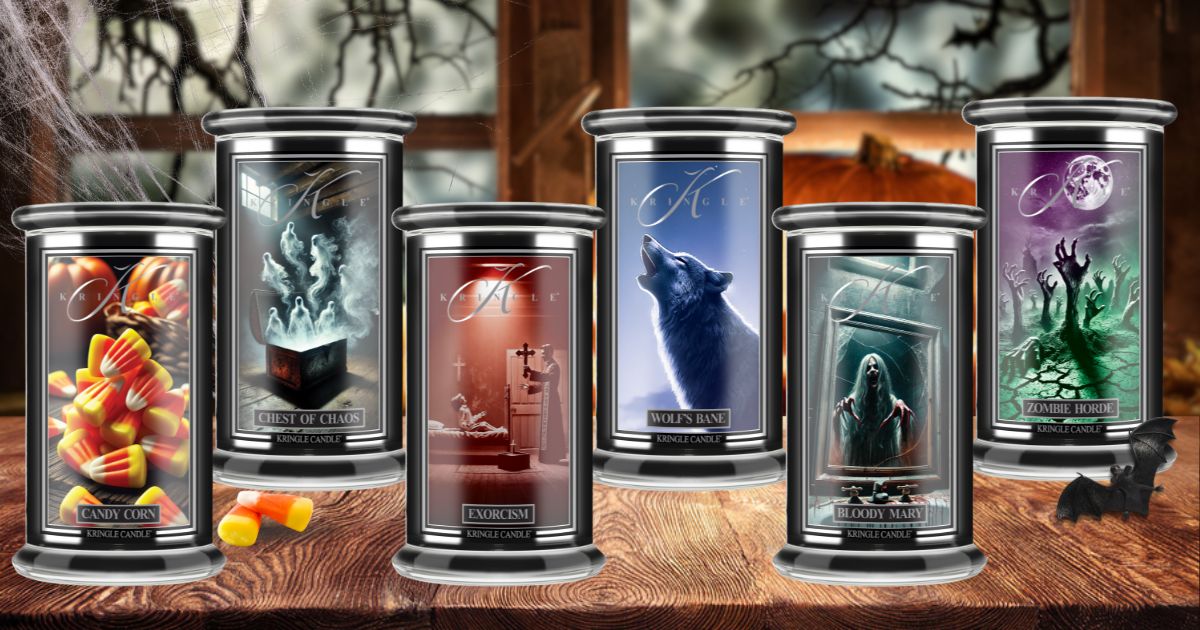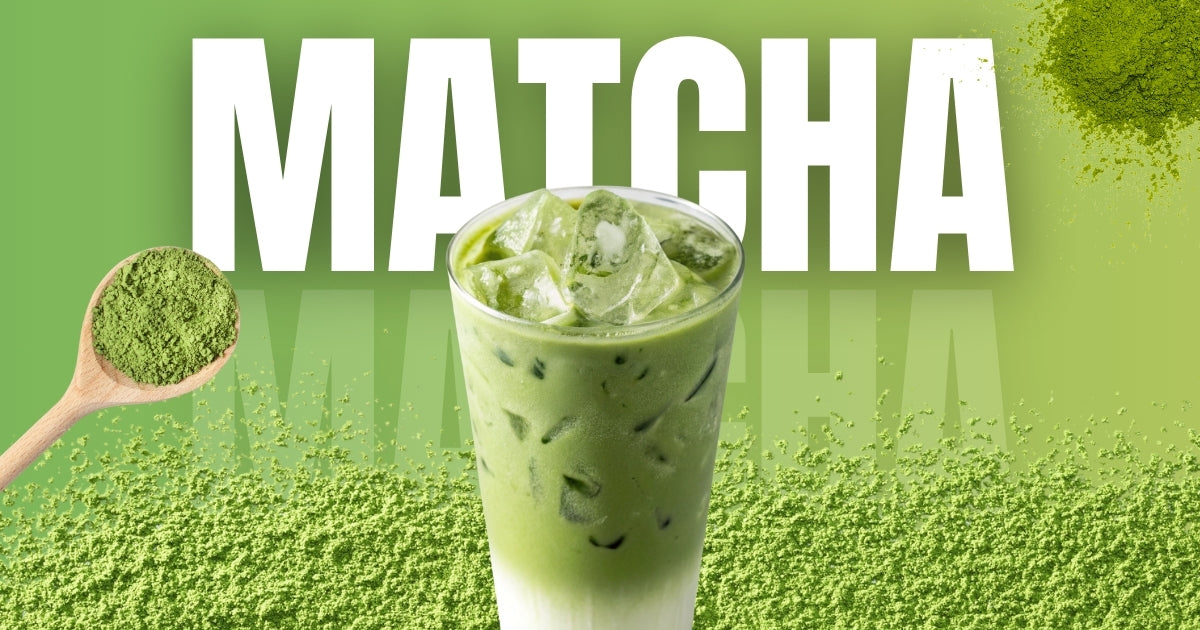
The apple - already in In Genesis , the first book of the Bible, the seductive fruit plays a significant role that has remained ingrained in Western cultural understanding to this day.
Indeed, the cultural influence of the fruit on our world today should not be underestimated. After all, according to tradition, we have an apple to thank for Sir Isaac Newton discovered gravity, one of the fundamental building blocks of modern physics and thus our current understanding of the universe and our place in it.
And hardly anyone can hear the word " Apple " today without thinking of technological progress.
But why is the apple so important and omnipresent and how did it manage to Apple Pie even become an unofficial symbol of an entire nation? And was Apple Pie perhaps not the first Soul Food the American apple-based?
The story begins, as so often, at the roots.
Comparing Apples and… Roses?
Especially when Apple Pie is so inseparably linked to American food culture and is now 2,500 different apple varieties cultivated, it may be surprising to hear that in fact there are only 4 types of apples that were native to America before the times of European colonization.
Apples, pears, cherries, strawberries, plums and peaches are all closely related to each other . And not only that, all these fruits are part of the Rosaceae family and thus, as the name suggests, very closely related to roses .
Like roses, apples also come from Central and East Asia , probably in the area of today's Kazakhstan , where they are already well 10,000 years before Christ Over the millennia, they traveled further and further west via ancient trade routes and were cultivated in southern Europe by the Greeks and Romans cultivated on a large scale. Through Roman campaigns and conquests, the apple in its present form eventually reached Central and Northern Europe.
The significance of the apple fluctuated dramatically even then. The Greeks saw it as a A potent aphrodisiac , while among the Celts it became a symbol of the cycle of death and rebirth. In the Middle Ages, the apple was immortalized in the Bible as a symbol of temptation by evil, hence its scientific Latin name " malus ," which literally means "evil."
Given this bad reputation, it is at first glance somewhat strange that in the Christian Middle Ages kings often wore the so-called Imperial Orb - a golden ball with a cross on it. The solution to the riddle lies in the double meaning of the apple by the Holy Roman Empire of the German Nation . The imperial orb isn't actually an apple at all. Its Latin name, "Globus cruciger," simply means "cross-bearing globe" and is a reference to the ancient Roman Empire's global rule, as understood at the time.
How the apples, which were widespread in America before the times of immigrants, got there is not known, but it is suspected that they potentially came from Asia via the ancestors of the American fauna or even the ancestors of the native peoples. Bering Strait land bridge came to the new world.
The 4 apple varieties which were proven to have been native to North America before the arrival of Europeans, are all Ornamental apples (Crabapples in English). These apple varieties are particularly sour and have limited use as food. In some Southeast Asian regions, related species are used as Acidifier and spice used.
Why the ancestors of the indigenous peoples would have taken the unappetizing apples with them on their arduous journey or whether they came to North America by other means is unknown, especially since the indigenous peoples never cultivated these plants or systematically used them as a food source.
The apple actually only came into use as a foodstuff with the European settlers Beginning of the 17th century into the new world.
The first settlers were faced with a great task. agriculture At that time, large-scale agriculture was largely unknown in the northern part of the American continent, with hardly any large population centers such as those found in the South American civilizations at that time.
Although there was Native fruits , such as mulberries, plums, cherries, persimmons, and ornamental apples, but these were wild and grew sporadically and disorderly as part of the local vegetation and initially did not really suit the taste of the newcomers. Fortunately, the settlers came well prepared with Seeds and seedlings from their homeland and in the early days of colonization, horticulture became a part of the daily life of all settlers and orchards were an integral part of every landed property.
At first, the settlers had a hard time, but this was not due to their efforts. The problem was simply that there was no way to As already mentioned , apples and other fruits are closely related to roses. This means, among other things, that they cannot self-pollinate and for reproduction on the help of birds or insects are.
Therefore, even after the usual four to five years of growth, the trees hardly bore any fruit. Only with the import of European Honey bees A good decade later, the harvests could finally begin on a large scale.
The experiments with peaches, apricots, figs and, who would have thought, apples were particularly fruitful (pun intended). Although not all varieties were successful with the often harsh winters of the country, but some survived and became a constant part of the first large-scale agricultural culture in North America.
Still, it was still a long way to go before apple pie could be made. While recipes from the Old World had long been known and local resources were now available, the American settlers had other urgent plans for their hard-earned fruits: Alcohol .
Cider, Perry, Mobby and Brandy - the majority of American apples, pears and peaches ended up in bottles instead of on plates.
While it may seem wasteful at first glance, there is a simple explanation. High-quality fruit needs a lot of time and effort . Fruits from seedlings and seeds often grow irregularly and vary greatly in quality. But the typical American colonist, with land to cultivate infinitely larger than any available lease in Europe, simply had not the time for more complex planting methods, such as grafting, in which the trees are cloned and variations and modifications of the fruit are largely avoided.
For the Alcohol fermentation On the other hand, fruits from lower quality and a good cider could also be produced from deformed apples.
Particularly Cider , with its relatively simple production, quickly became a mainstay of American agricultural culture and, one could argue, the soul drink of early Americans. And that was long before apple pie ever reached the continent as a soul food candidate.
The Tale of Johnny Appleseed
America today has the dreamy image of the land of unlimited opportunity – a country where everyone can make their own way if they only bring enough will and ingenuity. Nowadays, that's called Entrepreneurship , with world-famous faces such as Steve Jobs, who was able to rise from a tinkerer in his garage to a market leader in computer technology with worldwide cult status - under the brand name " Apple ".
But you don't have to wait for the digital revolution or the early 21st century to find examples of this business acumen and inventiveness.
Johnny Appleseed is an American legend.
According to popular belief, he made the acquaintance of a wild wolf, slept in a hollow tree trunk, and wore the pot he used to prepare his dinner as a hat during the day. What initially sounds like a typical folk tale, however, has very real roots:
John Chapman , a follower of the Swedish scientist, philosopher and theologian Emanuel Swedenbog, was a well-known authority in Ohio, Pennsylvania and Indiana in the first half of the nineteenth century . Presumably, it was his unusual idiosyncrasies, such as his vehement quoting of theological texts and his fashion sense, consisting of a burlap shirt and bare feet, to which Johnny owes his more adventurous qualities.
Nevertheless, Chapman's real deeds are also curious. His work began with the planting of the first apple orchard in Fort Pitt, Pennsylvania , which he planted with seeds he collected from the local cider factories As the colonists advanced further west, Chapman is said to have packed his things and handed over his grove to a poor family while sailing the Ohio River Chapman scouted routes along which future settlers would likely move westward and grew apple seedlings from his seeds. When, as he expected, When the settlers came , he sold or gave them the seedlings.
In the course of his work, Chapman hundreds of orchards many of which he handed over to other settlers as he moved on, reappearing only sporadically every few years—not to collect rent, but to check on the gardens and, if necessary, make improvements.
In his later years, Chapman is said to have even financial remuneration for his services, instead completely content with a dry place to sleep, a warm meal and perhaps a listening ear or two for his views on religious texts and doctrines.
Even if many of the stories about Johnny Appleseed are at least victims of well-intentioned exaggeration and embellishment, it is undisputed that he played an important role in the spread of apples across the continent and also in the Settlement of the country played himself.
Like their ancestors, many of the westward-moving settlers found comfort in the taste of alcohol, not to mention its health benefits, and cider, as mentioned, was an easy-to-produce version, even for the average American in his or her home kitchen.
Apple Cider
The history of cider goes back almost as far as that of the apple itself.
The drink from fermented apples , which we know today under this name, we also owe to an early European civilization – however, not to the Romans or Greeks but the Celts .
As early as 3,000 BC, the Celts made from the otherwise virtually inedible Ornamental apples a slightly alcoholic drink. The Romans, who had advanced as far as Britain during their campaigns, quickly adopted the recipe from the local inhabitants and refined the production by cultivating their own apple varieties.
The Celtic alcopop predecessor quickly spread throughout Europe and the Mediterranean via the Roman trade routes and remained after the fall of the Roman Empire a widely consumed drink throughout Eurasia.
But cider was not just a soft drink as we know it today, especially in its British homeland. From the 13th to the 19th century, 4 pints (approx. 2.4 liters) of cider were a staple Part of the payment of farmers and field workers in England and in the 14th century, children in many places were not fed with water but with cider , as the slightly alcoholic drink was cleaner than plain water .
It was primarily for this reason that early settlers in America initially used their fruits to make alcoholic beverages. Due to the processes used, the alcohol content was much lower than today, but it was sufficient to kill many bacteria, making the consumption of these low-alcohol beverages much safer. than drinking from local water sources .
The triumph of cider in America only ended in early 20th century with the further spread of Beer through new waves of immigration from Europe.
As American as Apple Pie (?)
A pinch of cinnamon and cloves, crispy baked crust and of course perfectly cooked apples - this is how you imagine the perfect Apple pie before.
Today, it represents American soul and comfort food like no other dish. In fact, the American history of Apple Pie a very short and less significant one for the history of the country than, for example, the influence of cider.
The oldest verifiable recipe for Apple Pie comes from from England and goes back to the year 1381 . The pie is in many ways similar to today's typical apple pie, with a top crust and filling. Even the list of ingredients isn't unfamiliar in its approach, albeit somewhat bizarre in its wording: "good apples, good spices, figs, raisins, and pears."
The ingredients were Saffron colored, covered with a top crust of dough and baked until the fruit is cooked to your desired degree. There are variations of this recipe with and without additional soil crust, which seems to have been a later addition to the recipe.
However, with the widespread distribution of apples across the continent, it wasn't long before the sweet dessert spread beyond national borders and gave rise to some local variations.
The Dutch Apple Pie, also known as " Appeltaerten ," is prepared like its English cousin. After the first baking, however, the top crust is removed and the contents are whisked with a little cream. The pie then rises back into the oven until the mixture inside has dried.
Another variant is the French Apple Tart . Here, the blueprint of the English pie is turned on its head. Instead of a top crust, the tart has only a base crust on which the ingredients that would otherwise serve as the filling are layered. Caramelize The shape of the cake is retained after cutting. An interesting exception here is Tarts from Normandy , which follow the British example much more closely, including the top crust.
In Sweden, apple pie is also a popular dessert for all age groups. However, this version is more of a Apple crumble , mixed with breadcrumbs instead of traditional pie crust. The Swedes also have another variation of apple pie, the " äppelkaka ", a Sponge cake in which apple pieces are mixed.
Last but not least, there is the Austrian variant: Apple strudel . Except for the apples, there are hardly any similarities to the English recipe. One side of a thin puff pastry sheet (instead of the typical thick pie crust) is filled with Apple compote and then the sheet is rolled up into a roll. The strudel, unlike other apple pies, is baked in a rectangular shape baked instead of in the traditionally round pie shape . The cutting is also different. Apple pie and its variations are usually served in triangular pieces. Strudel, on the other hand, is more likely to be sliced and served due to its rectangular shape. similar to Stollen .
The traditional toppings are the same for all versions. Apple pie, apple strudel, apple tart, etc. are usually served with a scoop of ice cream or a blob cream or Vanilla pudding .
But back to America.
When the yields of local American fruits were reduced by the import of European honey bees finally began to rise and the Hygiene standards and thus improved the water used, the settlers were finally free to use their fruit for purposes other than just cider.
And of course, it was only a matter of time before the first domestic ovens were filled with the smell of freshly baked apples.
The first recorded mention of a American apple pies comes from from 1697 and the first all-American cookbook “American Cookery” from 1796 even contains two different recipes for what is called the “typical American” cake.
Interestingly, the European origin of the court from this point on systematically hidden and the Apple Pie became the symbol for American patriotism explained as we still know it today. In the 1940s, the iconic motto “As American as Apple Pie” as an expression of national pride.
Ultimately, the pure American episode but more of an epilogue in the centuries-old history of apple pie and not the purely American national saga that many promote it as.
If you want to know how Sabine Ryan bakes her apple pie, then you will find Here is her very personal recipe :
And if you want to try it yourself, we have everything the budding pie baker needs:
- Glass pie dish from Anchor Hocking
- Glass mixing bowl from Anchor Hocking
- Gluten-free baking mix for pie crust
- Apple Pie Spice
- Madagascar Bourbon Vanilla Extract from Nielsen-Massey
- Brown Sugar
The apple doesn't fall far from the tree
With the large increase in yield, apples quickly became a Consumer goods . Domestic orchards increasingly disappeared as America continued to transform into an urban society. Ultimately, the multitude of imported and newly bred apple varieties of two species largely eliminated them from everyday American life and the mass market on the continent.
“Red Delicious” and “Golden Delicious” from the Stark Bro's Nursery in Louisiana have been household names since the 1920s. And of course, there's a little story to tell about this success.
The origin of the “Red Delicious” variety is not particularly spectacular, as it is only a breed from the company’s own orchards that proved to be particularly productive.
The story behind the variety “Golden Delicious” is already there a bit more sensational .
According to the company legend, Co-owner Paul Stark attracted attention to the fruits of farmer Anderson Mullins, who had sent samples to the company for two consecutive years in hopes of cooperation. Impressed by the fruits, Stark traveled 1,000 miles by train and then another 20 miles by horse to Odessa, West Virginia. Once there, he felt like the Victim of a cruel prank . The trees he inspected were just a mix of wild saplings and inbred hybrids. Stark turned to leave in disappointment when he paused and saw a single tree standing on a small hill near the river that looked "as if it had been straight from the Garden of Eden ” and whose branches bent under the heavy weight of numerous large apples.
Stark immediately bought the tree for today’s Equivalent of $100,000 and had the tree protected from local fruit thieves in a huge metal frame, similar to a birdcage – the trademark of the company for the following years.
The success of these apple varieties is reflected in the modern American consumer spirit. Unlike here in Germany, where fruit displays are often filled with varieties such as Gala , Braeburn , Pink Lady & Co. offer a wide selection, the motto in many American stores is still “one red, one yellow, one green” – or in other words: “Red Delicious”, “Golden Delicious” and “Granny Smith.”
On a side note:
The typical green apple variety “ Granny Smith ” is not an American apple variety. It was bred by chance by Maria Ann Smith , a native Englishwoman who emigrated to Australia with her husband in the mid-nineteenth century. According to tradition, the apples she cultivated came from from Tasmania .
This limited selection does not mean that apples play a subordinate role in the United States. The USA is the world's leading apple producer. 2nd place among apple producers , surpassed only by China, and the apple is the second most consumed fruit in the country, right after the banana . However, the majority of the more than 2,000 modern apple varieties in the USA are either exported or sold in small local areas.
An Apple a Day keeps the Doctor away
Who doesn’t know this saying?
Unlike “As American as Apple Pie”, however, there is more than a grain of truth behind the old saying. Because the apple actually has many health-promoting properties , even if these do not come close to the almost magical qualities attributed to it in the 19th century.
Apples are free from fat , sodium and cholesterol and are also a good source of Fiber and vitamin C , one of the few vitamins that the human body cannot produce itself.
Apples are also a wonderful diet snack. Not only are they fat-free, but the fiber in apples contained water quickly provide a Feeling of fullness that prevents cravings and similar symptoms.
And unlike other fruits, apples are also practical and easy to eat - even on the go. Unlike oranges and the like, no annoying peeling necessary .
So instead of the energy bar or the protein shake on your next diet, simply Bite the bullet and the next piece of apple pie – whether British, American, French or Austrian – will taste all the better.
If you want to enjoy the aroma of freshly baked apple pie, sparkling cider & Co. without any guilt, we recommend our delicious smelling Scented candles from Country Candle :
- Warm Apple Pie scented candle by Country Candle
- Apple Cider Cake scented candle by Country Candle
- Macintosh Apple scented candle by Country Candle
And if you haven’t had enough of apples yet, then look forward to our next blog in which we will take a closer look at the world’s most famous apple – the Big Apple .


